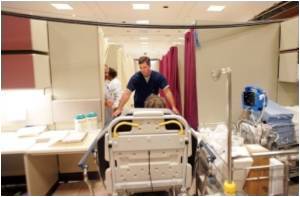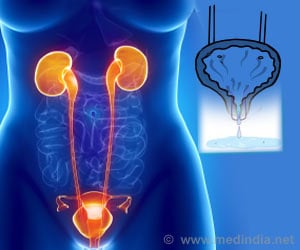In a study of 10 randomly selected North Carolina hospitals between 2002 and 2007, it was found that, unfortunately, there were no decreases in patient harm in spite of united and intensive effort.

Since a 1999 Institute of Medicine report sounded the alarm about high medical error rates, most U.S. hospitals have changed their operations to keep patients safer. The researchers wanted to assess whether these patient-safety efforts reduced harm. They studied hospitals in North Carolina because that state has shown a particularly strong commitment to patient safety.
"We found that harm rates — in a state that was very engaged in patient safety — did not change over time. This was a little surprising to all of us," said senior study author Paul Sharek, MD, who is an associate professor of pediatrics at Stanford and chief clinical patient safety officer at Lucile Packard Children's Hospital. "Our findings are a call to action for the health-care system. We need a nationwide strategy for reducing harm from medical care."
The research will be published Nov. 25 in the New England Journal of Medicine. The study's lead author is Christopher Landrigan, MD, assistant professor of pediatrics and of medicine at Harvard.
To perform the study, the team first verified the sensitivity and reliability of the IHI's Global Trigger Tool to detect evidence of harm through a review of patients' medical records. Trained investigators scanned patients' charts for "trigger" events that suggested harm had occurred. For instance, a prescription for the anti-opioid drug naloxone could suggest an overdose of morphine or a related opioid medication. When reviewers found such an event, they performed a close reading of the patient's entire medical record to look for evidence of harm.
In the study, teams of reviewers drawn from within and outside the study hospitals used this method to examine medical charts from 2,341 randomly selected hospital admissions at 10 randomly selected hospitals in North Carolina between January 2002 and December 2007.
Advertisement
"As had been shown in several other studies, the great majority of medically induced harms in inpatient settings are minor or reversible," said Sharek. But, consistent with other research, some patients did have more serious harms: 50 were classified as life-threatening, 17 incidents resulted in permanent harm to a patient and 14 deaths were attributed in whole or in part to medical errors.
Advertisement
There are several possible explanations as to why harm rates did not improve over time despite active engagement in patient-safety efforts in hospitals across North Carolina, the authors noted.
First, "Implementation of best practices shown to improve patient safety is very difficult and takes time," Sharek said. "The 10 hospitals involved in this study have likely implemented a number of best practices related to patient safety, but, at least by 2007, had not yet reaped the benefit of this hard work. Our study should not be interpreted to mean that North Carolina's vigorous safety efforts have not had an effect since 2007."
Second, several of the practices shown in prior research to improve patient safety — such as the use of electronic medical records, computerized physician work-order entry and work-hour limits for medical staff — take time and often substantial funding to fully implement.
Third, the science of patient safety is relatively young and thus there are few evidence-based best practices identified in the medical literature for hospitals to implement. As a result, many practices that could theoretically improve patient safety are being tried by well-intentioned health-care providers without evidence that these actually reduce patient harm. More research is needed to separate useful safety interventions from those that do not reduce medical errors, Sharek said.
Source-Eurekalert








